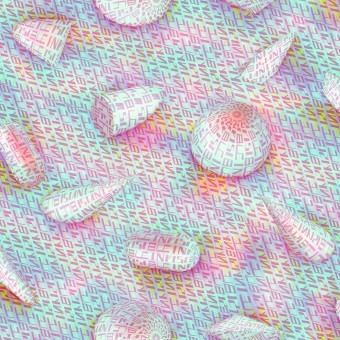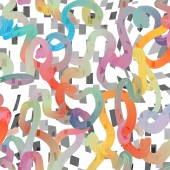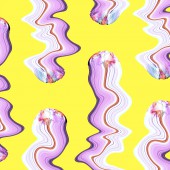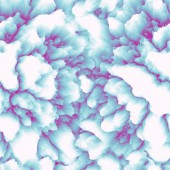
| THE AWARD |
| CATEGORIES |
| REGISTRATION |
| SUBMIT YOUR WORK |
| ENTRY INSTRUCTIONS |
| TERMS & CONDITIONS |
| PUBLICATIONS |
| DATES & FEES |
| METHODOLOGY |
| CONTACT |
| WINNERS |
| PRESS ROOM |
| GET INVOLVED |
| DESIGN PRIZE |
| DESIGN STORE |
| THE AWARD | JURY | CATEGORIES | REGISTRATION | PRESS | WINNERS | PUBLICATIONS | ENTRY INSTRUCTIONS |
Unusual Beauty Print by Kaijie Chen |
Home > Winners > Design #52213 >Interview |
 |
|
FS: What is the main principle, idea and inspiration behind your design?
KC: Unusual Beauty is inspired by the crazy and beautiful side of mental disorders. Encouraging and inspiring people to optimistically see what had been passively seen, I wanted to translate mental disorder into an unusual however aesthetic form. The Unusual Beauty collection is explored by imagining what people's brain look like and from their perspective, what the world looks like. Prints are influenced by illusion visions from people who have OCD and other mental disorders, also as the result of a study of playful looks of brain and mind.
FS: What has been your main focus in designing this work? Especially what did you want to achieve?
KC: This is a series of prints I made for one of the most important person in my life. I've been accompanied and experienced a lot with her until she recovered from depression. My aspiration is using my strength of art to encourage people like her, and inspire people to see the beautiful side of mental disorder.
FS: What are your future plans for this award winning design?
KC: This collection is licensing through Designtex currently for bespoke projects.
FS: How long did it take you to design this particular concept?
KC: It took me 3 months to design the pattern, however the initial research were way earlier.
FS: Why did you design this particular concept? Was this design commissioned or did you decide to pursuit an inspiration?
KC: This is a series of prints I made for one of the most important person in my life. I've been accompanied and experienced a lot with her until she recovered from depression. My aspiration is using my strength of art to encourage people like her, and inspire people to see the beautiful side of mental disorder.
FS: Is your design being produced or used by another company, or do you plan to sell or lease the production rights or do you intent to produce your work yourself?
KC: This collection is licensing through Designtex currently for bespoke projects.
FS: What made you design this particular type of work?
KC: I was an textile designer and at the time when I was in school, I was very into motion graphics. However, rarely seeing any artist blend these together. Thus, I would like to experiment to make motion graphics into repeat patterns which could be easily applied for many printing purpose.
FS: Which design tools did you use when you were working on this project?
KC: The collection was initially made in Adobe Photoshop, Illustrator and Cinema 4D. Then the final composition was manipulated in Adobe Photoshop.
FS: What is the most unique aspect of your design?
KC: I am always fascinating about the story behind the design, blend design and art, thinking about phylosophy and psychology. I want to make good designs not only for practical purpose. To create an ambience, more accurately, to capture and reveal something which is created by human being ourself however not usually self aware.
FS: Is your design influenced by data or analytical research in any way? What kind of research did you conduct for making this design?
KC: The design research included a wide research base, including books, films and psychology courses, as well as a variety of communications with patients and people whose friend or family have mental disorder.
FS: What are some of the challenges you faced during the design/realization of your concept?
KC: The challenge definitely was how to think from their perspectives and translate into an unusual however aesthetic form. The Unusual Beauty collection explores concept in two directions: the illusion vision created by people who have mental disorder like OCD- camouflage text, melting metal and glitchy art effects; and playful looks of brain and nerves- exploding brain, twist mind.
FS: How did you decide to submit your design to an international design competition?
KC: Attending the A' Design award would let more people to see my designs which is very important to me because design is not a unidirectional activity. I need more feedback from different audience which helps me reaudit my works.
FS: What did you learn or how did you improve yourself during the designing of this work?
KC: The design process involved a lot of research. The design research included a wide research base, including books, films and psychology courses, as well as a variety of communications with patients and people whose friend or family have mental disorder.
FS: Thank you for providing us with this opportunity to interview you.
A' Design Award and Competitions grants rights to press members and bloggers to use parts of this interview. This interview is provided as it is; DesignPRWire and A' Design Award and Competitions cannot be held responsible for the answers given by participating designers.
| SOCIAL |
| + Add to Likes / Favorites | Send to My Email | Comment | View Press-Release |




